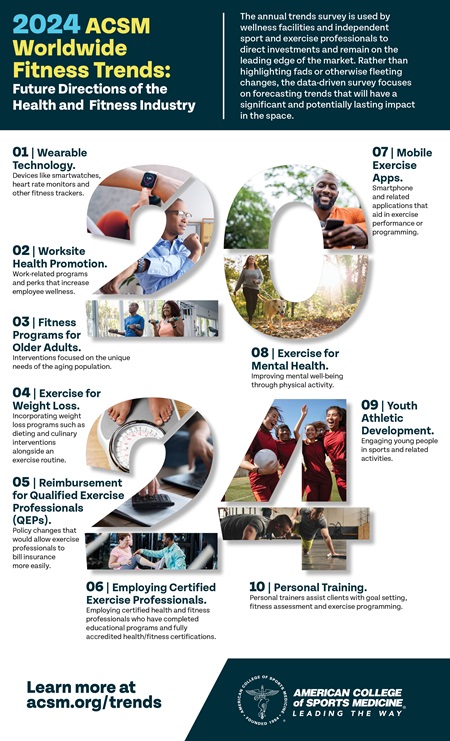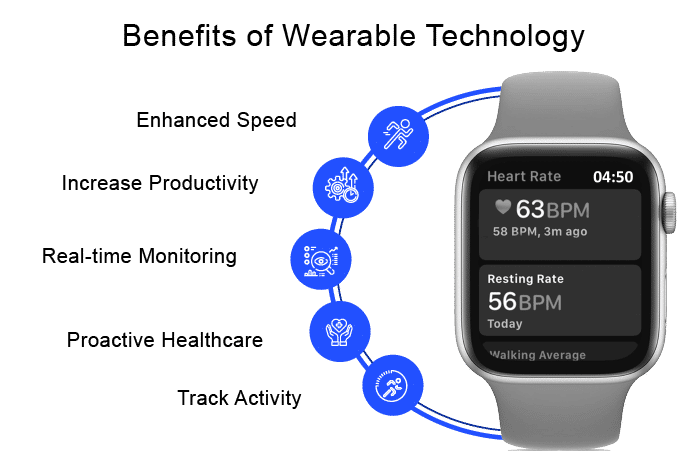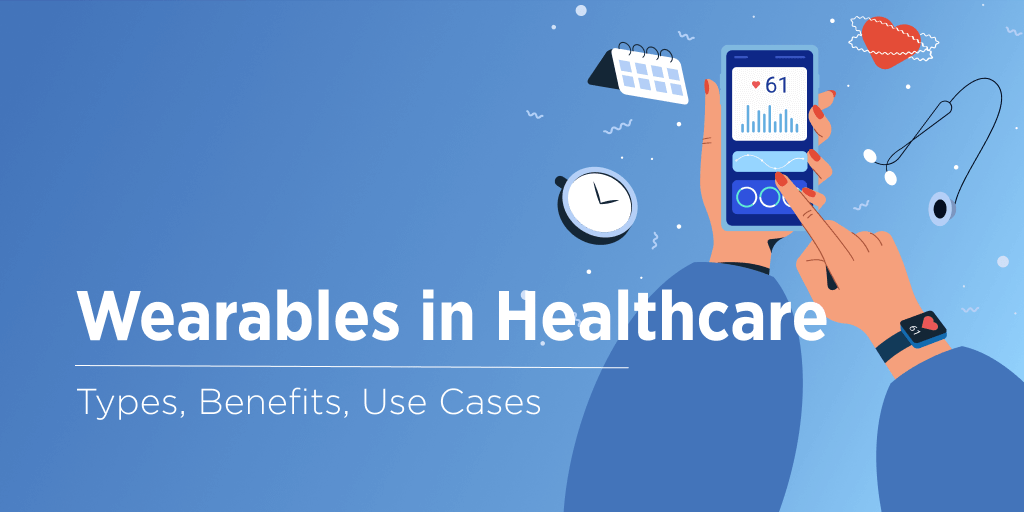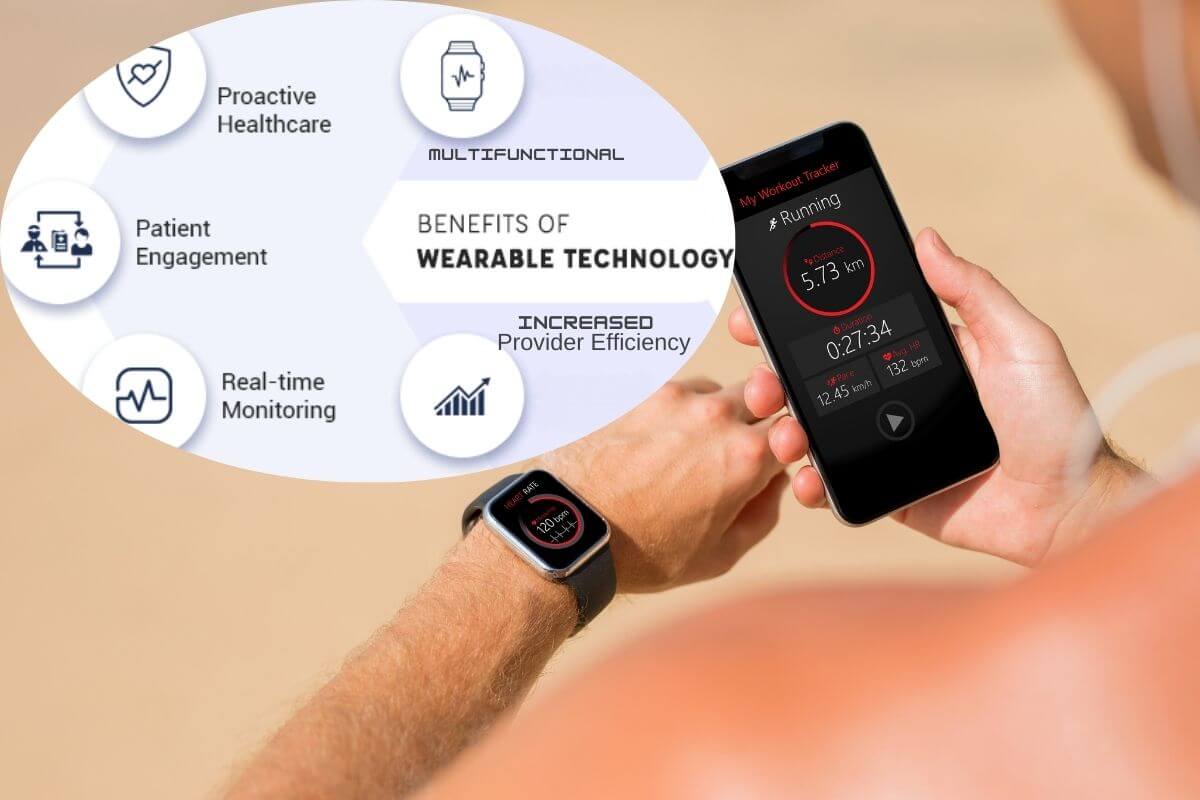Wearable technology has transformed health and fitness. These devices offer many benefits.
In recent years, wearable technology has become a popular tool for health enthusiasts. These gadgets, from smartwatches to fitness trackers, provide valuable insights into our daily activities. They monitor heart rate, count steps, track sleep patterns, and even measure stress levels.
With this data, individuals can make informed decisions about their health. Wearable technology not only encourages an active lifestyle but also helps in setting and achieving fitness goals. This article explores how these devices enhance our health and fitness. Dive in to learn more about the benefits of wearable technology in your wellness journey.

Credit: www.acsm.org
Enhanced Activity Tracking
Wearable technology has become a popular tool for improving health and fitness. Enhanced activity tracking is one of the key benefits of these smart wearables. They help users monitor their physical activity, providing valuable health metrics and personalized fitness goals. This technology encourages exercise adherence and offers detailed insights into daily activities.
Steps And Distance
Wearable fitness devices accurately track the number of steps you take each day. This feature helps users set and achieve their daily step goals, promoting a more active lifestyle. Walking is a simple yet effective way to improve fitness, and tracking steps makes it easier to stay motivated.
These devices also measure the distance covered during walks or runs. This information is crucial for people who enjoy running or walking as part of their fitness routine. Knowing the distance helps in planning and adjusting workouts for better results.
- Encourages regular movement
- Helps set achievable fitness goals
- Provides motivation to stay active
Smart wearables use advanced sensors to measure steps and distance accurately. They can even differentiate between walking, running, and other activities. This precise activity data analytics enables users to understand their exercise patterns better.
| Activity | Steps | Distance |
|---|---|---|
| Walking | 5,000 | 2.5 miles |
| Running | 10,000 | 5 miles |
Calorie Monitoring
Wearable fitness devices also excel at monitoring calories burned during various activities. This feature helps users understand how different exercises impact their calorie expenditure. By tracking calories, users can manage their weight more effectively.
Calorie monitoring works by using heart rate sensors and other data to estimate the number of calories burned. This information is essential for those who have specific weight loss or muscle gain goals. Knowing the calories burned during a workout helps in planning meals and snacks to align with fitness objectives.
- Helps manage weight
- Supports personalized fitness goals
- Offers insights into exercise efficiency
Health tracking technology provides detailed reports on calorie expenditure. These reports can be analyzed to understand trends and make necessary adjustments. With accurate calorie monitoring, users can achieve better results in their fitness journey.
Combining step and distance tracking with calorie monitoring offers a comprehensive view of physical activity. This holistic approach to health metrics tracking supports overall well-being and helps maintain a balanced lifestyle.
Personalized Health Insights
Wearable technology has transformed the way we monitor our health and fitness. One of the significant benefits is gaining personalized health insights. These insights help us understand our bodies better and make informed decisions. Using biometric data, wearable fitness devices provide real-time health insights, which can lead to improved health and fitness outcomes. Personalized health metrics from activity trackers and fitness apps give users a detailed view of their health status. This data empowers users to take proactive steps towards a healthier lifestyle.
Heart Rate Variability
Heart rate variability (HRV) is an important metric in health monitoring technology. HRV measures the variation in time between each heartbeat. Wearable fitness devices can track this data continuously. Understanding HRV can provide insights into your overall health and fitness.
Here are some benefits of monitoring heart rate variability:
- Stress Management: High HRV indicates a relaxed state, while low HRV suggests stress.
- Fitness Level: Regular tracking can show improvements in cardiovascular fitness.
- Recovery: Analyzing HRV helps determine if your body is recovering well from exercise.
Wearable fitness devices offer real-time health insights into your HRV. Many fitness apps integrate this data, providing personalized health metrics. This helps you tailor your workouts and manage stress more effectively.
Sleep Quality Analysis
Sleep is crucial for overall health and wellness. Wearable technology has advanced sleep tracking capabilities. These devices monitor various aspects of your sleep, providing a detailed analysis.
Here’s how sleep tracking can benefit you:
- Sleep Stages: Track your light, deep, and REM sleep stages.
- Sleep Duration: Ensure you get enough sleep each night.
- Sleep Disruptions: Identify factors affecting sleep quality.
Wearable fitness devices collect biometric data while you sleep. Fitness apps then analyze this data to provide insights. This helps you understand your sleep patterns and make necessary adjustments. Improved sleep quality can lead to better health and increased energy levels.
Using wellness technology for sleep quality analysis is a smart way to enhance your health. The personalized health insights from these devices can guide you towards better sleep habits.
Real-time Feedback
Wearable technology has become a staple for those looking to improve their health and fitness. One of the most significant benefits is real-time feedback. This feature provides users with instant information about their performance and health status. With wearable devices, individuals can make immediate adjustments to their workouts and routines. Real-time feedback is transforming how we approach fitness and health improvement.
Instant Performance Metrics
Wearable fitness devices offer instant performance metrics, which are crucial for effective workouts. These devices use biometric sensors to track various health indicators. Users receive immediate data on heart rate, calories burned, and distance covered.
Here are some benefits of instant performance metrics:
- Immediate adjustments to workout intensity.
- Better understanding of physical limits.
- Quick evaluation of progress.
For example, smartwatches for fitness provide real-time data analysis. This allows users to see their performance in real-time. Athletes can adjust their pace or effort based on the data displayed on their wearable health gadgets. This leads to more efficient and effective workouts.
Here’s a table that illustrates some key metrics tracked by wearable fitness devices:
| Metric | Description |
|---|---|
| Heart Rate | Measures beats per minute. |
| Calories Burned | Tracks energy expenditure. |
| Steps Taken | Counts daily steps. |
| Distance Covered | Measures distance traveled. |
These metrics provide personalized health insights, helping users tailor their workouts to their specific needs. Activity monitoring becomes more precise, enabling better health tracking technology.
Motivation Boost
Real-time feedback also serves as a significant fitness motivation booster. Seeing immediate results from a workout can be incredibly encouraging. Wearable health gadgets keep users engaged and motivated by showing progress in real-time.
Some ways real-time feedback boosts motivation include:
- Instant gratification from seeing results.
- Setting and achieving daily goals.
- Competing with friends or oneself.
Health improvement tools like smartwatches for fitness often come with built-in challenges and rewards. Users can set daily step goals or calorie targets. Achieving these goals provides a sense of accomplishment, encouraging continued effort.
Additionally, wearable fitness devices often have social features. Users can share their progress with friends or join fitness communities. This social aspect adds another layer of motivation, as users can encourage each other.
Here’s a list of motivational features found in many wearable fitness devices:
- Goal setting and tracking.
- Social sharing and competitions.
- Progress notifications and rewards.
Real-time feedback ensures users stay on track with their fitness goals. It provides the necessary data to maintain motivation and achieve better health outcomes. Personalized health insights from these devices make fitness journeys more enjoyable and effective.
Goal Setting And Achievement
Wearable technology has transformed the way people approach health and fitness. One of the most significant benefits is its role in goal setting and achievement. By using wearable devices, individuals can set personalized fitness goals, track their progress, and stay motivated. Let’s explore how wearable technology aids in customizable fitness goals and progress tracking.
Customizable Fitness Goals
Wearable devices allow users to set customizable fitness goals that suit their individual needs and preferences. Whether you’re aiming to lose weight, build muscle, or simply stay active, these devices provide a platform to define and achieve your objectives.
Key features of wearable technology in setting fitness goals:
- Personalized Workouts: Wearable devices offer tailored workout plans based on your fitness level, health conditions, and goals.
- Activity Sensors: These sensors monitor your daily activities, such as steps taken, calories burned, and distance traveled, helping you set realistic goals.
- Heart Rate Monitoring: By tracking your heart rate, you can ensure your workouts are effective and safe.
- Health Data Analytics: Wearables analyze your health data to suggest improvements and adjustments to your fitness plan.
For instance, if your goal is to improve cardiovascular health, your wearable device can recommend specific activities that elevate your heart rate to the optimal zone. These devices also adapt to your progress, increasing the intensity of workouts as you become fitter.
The table below highlights common fitness goals and how wearable technology supports them:
| Fitness Goal | Wearable Technology Support |
|---|---|
| Weight Loss | Calorie tracking, step counting, personalized workout plans |
| Muscle Gain | Strength training programs, progress tracking, real-time feedback |
| Cardiovascular Health | Heart rate monitoring, endurance activities, health data analytics |
Progress Tracking
Progress tracking is crucial in achieving your fitness goals. Wearable devices excel in this area by providing real-time feedback and comprehensive data on your activities.
Key benefits of progress tracking with wearable technology:
- Fitness Tracking: Continuously monitors your activities, ensuring you stay on track with your goals.
- Health Monitoring: Tracks vital signs like heart rate, sleep patterns, and stress levels, offering a holistic view of your health.
- Motivation Through Technology: Provides reminders, achievements, and progress reports to keep you motivated.
For example, if your goal is to walk 10,000 steps a day, your wearable device will alert you of your progress throughout the day. If you fall behind, it may send a gentle reminder to get moving. This constant feedback loop helps you stay focused and motivated.
The table below shows how wearable devices aid in tracking progress for different health aspects:
| Health Aspect | Progress Tracking Features |
|---|---|
| Daily Activity | Step counting, distance tracking, calorie burn |
| Heart Health | Heart rate monitoring, activity intensity tracking |
| Sleep Quality | Sleep pattern analysis, sleep duration tracking |
By integrating these tracking features, wearable technology helps users gain a clear understanding of their progress, making it easier to adjust their routines and achieve their fitness goals.
Social Connectivity
Wearable technology is transforming health and fitness by keeping us connected. Social connectivity is a key benefit, helping users stay motivated and engaged. It encourages community engagement, goal setting, and sharing personal health insights.
Community Challenges
Community challenges are a great feature of wearable devices. They allow users to participate in group activities and competitions. This fosters a sense of camaraderie and accountability. Fitness trackers and wellness technology offer various community challenge options.
- Step Challenges: Compete with friends to see who takes the most steps.
- Distance Goals: Set and achieve walking or running distance targets together.
- Activity Tracking: Monitor different activities like cycling, swimming, or hiking.
These challenges promote motivation and consistency. They also help in goal setting and achieving health milestones. Wearable devices provide real-time data and feedback. This keeps users informed and engaged in their fitness journeys.
Sharing Achievements
Sharing achievements is another benefit of wearable technology. Users can share their progress and milestones on social media. This social sharing creates a supportive environment. It encourages others to pursue their fitness goals.
Fitness trackers make it easy to share personal health insights. Users can post updates on their workouts, calories burned, and steps taken. This can be done through apps connected to wearable devices.
| Activity | Sharing Platform | Benefits |
|---|---|---|
| Daily Steps | Facebook, Instagram | Motivation, Community Engagement |
| Running Distance | Twitter, Strava | Goal Setting, Social Sharing |
| Calories Burned | MyFitnessPal, Fitbit App | Health Monitoring, Personal Health Insights |
Sharing achievements helps users stay motivated. It also inspires others to take up health and fitness activities. This creates a ripple effect, promoting overall wellness.

Credit: www.delveinsight.com
Integration With Health Apps
Wearable technology has transformed the way we approach health and fitness. One of its most significant benefits is the integration with health apps. Wearable devices, such as fitness trackers and smartwatches, sync seamlessly with various health apps. This synergy enhances the overall user experience and delivers a wealth of health insights. Users can monitor their health, manage their lifestyle, and optimize their performance through real-time data.
Data Synchronization
Wearable devices collect vast amounts of biometric data. This data includes steps taken, heart rate, sleep patterns, and calorie intake. Synchronizing this data with health apps provides users with a comprehensive view of their health. The integration enables real-time data transfer, ensuring that users have the most up-to-date information at their fingertips.
Key benefits of data synchronization include:
- Seamless Data Transfer: Wearable devices automatically sync data with health apps, eliminating the need for manual entry.
- Enhanced Accuracy: Real-time data ensures that health metrics are accurate and reliable.
- User-Friendly Experience: Health apps present data in an easy-to-understand format, making it accessible for everyone.
Here is a simple table showcasing how data synchronization works:
| Wearable Device | Biometric Data Collected | Health App Integration |
|---|---|---|
| Fitness Tracker | Steps, Heart Rate, Sleep | Google Fit, Apple Health |
| Smartwatch | Calories Burned, Activity Levels | Samsung Health, MyFitnessPal |
| Smart Clothing | Posture, Muscle Activity | Strava, Fitbit |
Data synchronization between wearable devices and health apps provides users with detailed health analytics. This integration enables personalized health insights and more effective health monitoring.
Holistic Health Management
Health apps offer holistic health management by integrating data from multiple sources. This approach provides a complete picture of an individual’s health and lifestyle. Users can track their activity, monitor their sleep, and manage their diet all in one place.
Holistic health management benefits include:
- Comprehensive Tracking: Users can monitor various health metrics, including activity levels, heart rate, and sleep patterns.
- Personalized Insights: Health apps analyze data to provide personalized health insights and recommendations.
- Lifestyle Management: Users can set goals, track progress, and receive feedback to improve their health and fitness.
Here is an example of how holistic health management works:
- Activity Tracking: A user wears a fitness tracker that monitors steps, heart rate, and calories burned.
- Data Synchronization: The fitness tracker syncs data with a health app, providing real-time updates.
- Health Analytics: The app analyzes the data and offers personalized recommendations for activity and diet.
- Performance Optimization: The user follows the recommendations to optimize their performance and achieve their health goals.
Holistic health management through wearable technology and health apps empowers users to take control of their health. It provides a complete view of their well-being, enabling informed decisions and better health outcomes.
Chronic Condition Management
Wearable technology has become a significant part of our daily lives, especially in improving health and fitness. Chronic Condition Management is one of the critical areas where wearable devices offer substantial benefits. These devices provide real-time health alerts, personalized health insights, and continuous health monitoring. This is particularly beneficial for managing chronic conditions like diabetes and heart disease, making it easier for individuals to track their health and make informed decisions.
Diabetes Monitoring
Wearable technology has revolutionized diabetes monitoring, providing continuous health monitoring and real-time health alerts. This helps individuals manage their blood sugar levels more effectively. Some of the key benefits include:
- Continuous Glucose Monitoring (CGM): Devices like CGM systems offer real-time insights into blood sugar levels, reducing the need for frequent finger-prick tests.
- Personalized Health Insights: Wearable devices provide detailed reports on blood sugar trends, helping users understand how different foods, activities, and medications affect their glucose levels.
- Activity Tracking: These devices track physical activity, which is crucial for diabetes management. Regular exercise can help regulate blood sugar levels.
- Sleep Monitoring: Quality sleep is essential for diabetes management. Wearable devices monitor sleep patterns and provide insights to improve sleep quality.
Here is a table summarizing the features of wearable devices for diabetes monitoring:
| Feature | Benefit |
|---|---|
| Continuous Glucose Monitoring | Real-time blood sugar tracking |
| Activity Tracking | Helps regulate blood sugar through exercise |
| Sleep Monitoring | Improves sleep quality for better glucose control |
| Personalized Health Insights | Detailed reports on blood sugar trends |
Heart Disease Tracking
Heart disease is a leading cause of death worldwide. Wearable technology plays a crucial role in heart disease tracking by offering continuous health monitoring and real-time health alerts. Key benefits of wearable devices for heart disease tracking include:
- Heart Rate Monitoring: Fitness trackers and smartwatches monitor heart rate, providing users with valuable information about their heart health.
- Biometric Data Collection: Wearable devices collect data on heart rate variability, blood pressure, and other vital signs, helping users keep track of their heart health.
- Activity Tracking: Regular physical activity is essential for heart health. Wearable devices encourage users to stay active by tracking their daily steps and exercise routines.
- Sleep Monitoring: Poor sleep can negatively impact heart health. Wearable devices monitor sleep patterns and offer insights to improve sleep quality.
Here is a table summarizing the features of wearable devices for heart disease tracking:
| Feature | Benefit |
|---|---|
| Heart Rate Monitoring | Tracks heart rate for better heart health management |
| Biometric Data Collection | Monitors vital signs like heart rate variability and blood pressure |
| Activity Tracking | Encourages regular exercise for heart health |
| Sleep Monitoring | Improves sleep quality for better heart health |

Credit: www.velvetech.com
Increased Awareness And Accountability
Wearable technology has transformed the way people approach health and fitness. One of the key benefits is the increased awareness and accountability it brings. Wearable devices offer real-time data, personalized insights, and constant motivation, which helps users stay on track with their health goals. This heightened awareness encourages positive lifestyle changes and improves overall well-being.
Behavior Change Support
Wearable devices play a crucial role in supporting behavior change. By providing continuous health monitoring, these gadgets offer valuable insights into daily habits and activities. Users can track their progress, understand their patterns, and make informed decisions about their health.
- Activity Tracking: Fitness trackers record steps, distance, and calories burned, helping users stay active throughout the day.
- Sleep Tracking: Monitoring sleep patterns helps users improve their sleep quality and overall health.
- Biometric Data: Wearable devices measure heart rate, blood pressure, and other vital signs, offering a comprehensive view of physical health.
These features enable users to set realistic exercise goals and make necessary adjustments to their routines. The data collected by wearable devices provides a clear picture of personal health insights, motivating individuals to adopt healthier behaviors.
Additionally, wearable devices often come with built-in motivation tools, such as reminders, alerts, and rewards. These tools encourage users to stay consistent with their health and fitness routines, fostering long-term behavior change.
Daily Reminders
Daily reminders are another powerful feature of wearable technology. These reminders help users stay accountable and maintain their health and fitness goals.
- Exercise Goals: Reminders to move and exercise regularly ensure users stay active throughout the day.
- Health Monitoring: Regular notifications about vital signs keep users informed about their health status.
- Sleep Tracking: Bedtime reminders help users establish a consistent sleep schedule, improving sleep quality.
Daily reminders can also prompt users to take breaks, hydrate, and maintain proper posture. These small yet significant prompts encourage healthier habits and prevent burnout.
The constant feedback from wearable devices helps users stay focused on their health objectives. This ongoing support ensures that users do not lose sight of their goals, even during busy days. By integrating these reminders into their daily routines, users can achieve better health outcomes and sustain long-term lifestyle changes.
Wearable technology offers a comprehensive approach to improving health and fitness. The increased awareness and accountability provided by these devices make it easier for users to stay on track and achieve their wellness goals.
Frequently Asked Questions
How Does Wearable Technology Improve Fitness?
Wearable technology tracks real-time data like heart rate and steps. This helps users monitor and improve their fitness routines effectively.
Can Wearables Help In Weight Loss?
Yes, wearables track calories burned and activity levels. This helps users stay on top of their weight loss goals.
Do Wearables Monitor Sleep Quality?
Wearables monitor sleep patterns and quality. This helps users understand and improve their sleep habits.
Are Wearable Devices Accurate For Health Monitoring?
Most wearables offer accurate health monitoring. However, accuracy can vary depending on the device and usage.
Conclusion
Wearable technology offers many benefits for health and fitness. It tracks daily activities and monitors vital signs. This helps users stay motivated and focused on their goals. Personalized feedback supports better decision-making. Such devices can encourage healthier lifestyles. They can also detect potential health issues early.
These benefits make wearable technology a useful tool for anyone. Whether you are a beginner or an athlete, wearable tech can support your fitness journey. Embrace this technology to improve your health and well-being.

“As the voice behind Radiant Glow Health, we are dedicated to being your ultimate wellness and vitality companion. Our mission is to inspire and guide you on your journey to a healthier and more vibrant life. Join us as we explore holistic health practices and empower you to radiate wellness from within.”



